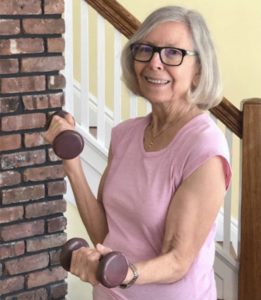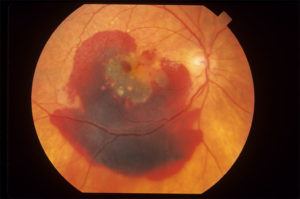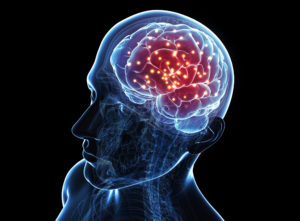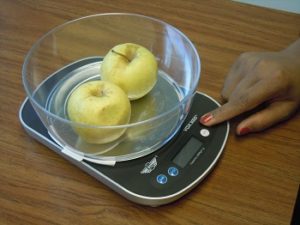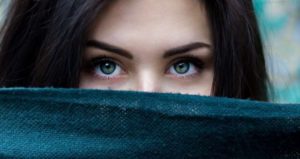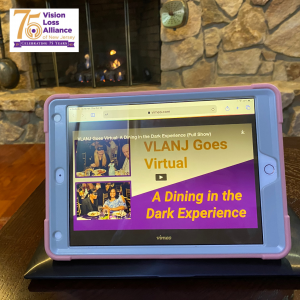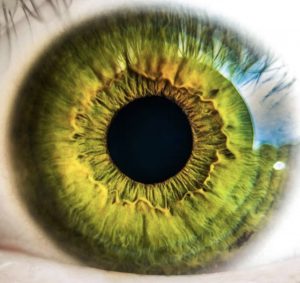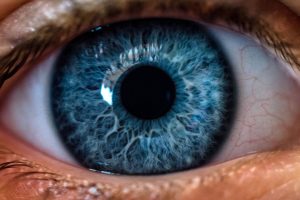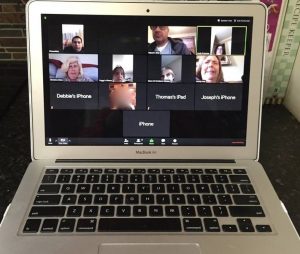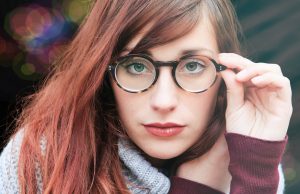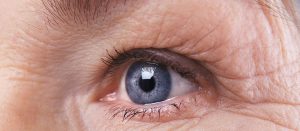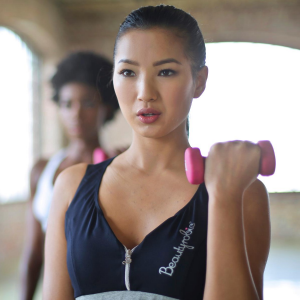Valentine’s Day “Very Red Velvet Cake”
Looking for the perfect Valentine’s Day recipe? Look no further!
VLANJ student and technology instructor Christina Brino recommends a recipe featured on Epicurious.com by Dora Charles: “Very Red Velvet Cake With Cream Cheese Icing and Pecans.” Here’s what you need to make it:
- YIELD
- Serves 12–16
INGREDIENTS
- Cake:
- 2½ cups cake flour
- ½ teaspoon baking soda
- 2 large eggs, at room temperature
- 1½ cups sugar
- 1½ cups vegetable oil
- 2 tablespoons distilled white vinegar
- 1 cup buttermilk
- 1 teaspoon pure vanilla extract
- 3 tablespoons red food coloring (from two 1-ounce bottles)
- Icing:
- 1 (1-pound) box confectioners’ sugar, sifted
- 1 (8-ounce) package cream cheese, softened
- 1 stick (8 tablespoons) butter, softened
- 1 cup chopped pecans
Here’s how to make it:
PREPARATION
To make the cake: Set the oven to 350°F and adjust the rack positions to the middle and top third. Spray three 8-inch round cake pans well with baking spray.
-
- Sift the flour with the baking soda.
- In a large bowl, with an electric mixer on medium speed, beat the eggs well, then beat in the sugar, oil, and vinegar. On low speed, slowly add the flour and beat in well. Add the buttermilk slowly, then the vanilla, and then the food coloring.
- Pour the batter evenly into the pans and rap them on the countertop several times to eliminate any air bubbles. Bake for 12 minutes, then rotate the pans from shelf to shelf so they bake evenly and bake until the tops spring back when lightly touched, about 25 minutes altogether. Let the cakes cool in the pans on racks for 15 minutes.
- Run a knife around the sides of the pans and invert the cakes onto the racks to cool completely. Once they’re cool, refrigerate the cakes for 20 to 30 minutes to make icing them easier.
- To make the icing: Combine everything in a medium bowl and mix well until very smooth. It’s best to use the icing right away, when it’s soft and spreadable.
- Put one cake layer upside down on a cake plate or cake stand and cover the top evenly with frosting. Add a second layer, right side up, and spread with more frosting. Top with the third layer, right side up, and spread the frosting evenly around the sides of the cake and on top; check for any places where you can see through to the cake. Finally, sprinkle the pecans evenly all over the top of the cake.
- Once the frosting sets, cut into slices to serve. This cake keeps for up to 2 weeks in a cake keeper, but once it’s ready, people want to dive right in.
Retina Specialist on Macular Degeneration and Other Conditions
February is Age-Related Macular Degeneration Awareness Month. Often called AMD or ARMD, it is the leading cause of vision loss and blindness among Americans who are aged 65 and older.
New Study Shows Restoration of Rudimentary Vision Through Implants
Restoration of vision through a brain implant in those who are blind is on the verge of becoming reality. Recent discoveries show that newly developed high-resolution implants in the visual cortex make it possible to recognize artificially induced shapes and percepts. Click this link to learn more: https://bit.ly/restoringrudimentaryvision
Holiday Gift Ideas for People with Vision Loss
Are you still on the lookout for holiday gifts this season? Click the link below to consider items suggested by ophthalmicedge.org for your friends and/or family members living with low vision or blindness.
Paul Caruso Misses His Long Commute to VLANJ but Feels Fortunate for Virtual Programs
Paul Caruso spent up to 90 minutes on a bus for people with disabilities to get to Vision Loss Alliance of New Jersey in Denville. The ride back to his Lodi home after weekly classes consistently took an hour and a half, and often involved a transfer.
That was just fine with Caruso. “I considered it all part of the experience, being out and connecting with people,” said the 53-year-old, who has been blind since birth. “I devoted my day to it, and that began as soon as I stepped on the bus.”
Since March, when VLANJ switched to virtual programs because of the COVID-19 pandemic, Caruso has immersed himself in the nonprofit’s online classes and support groups. “It’s really good for my peace of mind,” Caruso said. “It gives structure to my days. It’s nice to feel, `I’ve got to get to get onto that meeting,’ ” he said.
Caruso is a big fan of VLANJ’s self-advocacy group, Moving Forward One Step at a Time. He volunteers as a mentor for the Apps Club, an extension of VLANJ’s iPhone and iPad technology program. He’s enrolled in a peer support group, the Fit and Balance exercise class, and Inquiring Minds, a discussion group that often features guest speakers.
Caruso recently added VLANJ’s new Technology Learning Lab to his busy schedule. He’s learning computer skills using JAWS, a screen reader. Caruso said he wants to be prepared should a job opportunity arise. “It never hurts to try to think ahead, and that’s what I am trying to do,” he said.
Caruso lost his vision to retinopathy of prematurity (previously known as retrolental fibroplasia or RLF). The disease affects some people who were born prematurely and received oxygen therapy as part of their neonatal intensive care.
Caruso attended Lodi public schools. After graduating, he operated a vendor stand at the Richard J. Hughes Justice Complex in Trenton for 22 years. Through a New Jersey Commission for the Blind and Visually Impaired program, Caruso didn’t pay rent, but managed his own inventory of snacks and drinks. He moved back to Lodi in 2010.
He first attended VLANJ in 2015 and enrolled in the technology program. The following year, he signed up for the all-day wellness classes. “Thursdays are awesome! It’s great getting out and connecting with people,” Caruso said.
While he enjoys the virtual programs, Caruso plans to resume his long commute to VLANJ and in-person classes when the pandemic ends. “When we go back, I will be going back!” he said.
VLANJ Gives People New to Vision Loss a LIFT During Pandemic
Vision Loss Alliance of New Jersey this fall launched Living Independently for Tomorrow (LIFT), a virtual adaptive skills program for people adjusting to sight loss and their family members. LIFT is an online version of VLANJ’s effective in-person Essential Low Vision course, providing basic training in daily life activities.
Over four weeks, LIFT covers: cooking and kitchen safety; low-tech communications and simple solutions, including dialing a phone, medication identification and identifying bills and coins; education in lighting, contrast, optical aids, and basic assistive technologies; and an introduction to mobility and orientation by VLANJ’s mobility specialist. VLANJ also provides resources to participants.
Participants meet with VLANJ instructors over Zoom video conferencing for 90-minute sessions. They also can enroll in the nonprofit’s Beyond Sight wellness programs, such as Now and Zen Yoga and Fit and Balance. For more information, contact VLANJ Senior Program Manager Linda Groszew at lgroszew@vlanj.org.
Longtime Trainer at The Seeing Eye Joins VLANJ Board of Trustees
Had Lukas Franck liked working with children, his 43-year career with The Seeing Eye guide dog school might never have taken off. Vision Loss Alliance of New Jersey’s newest trustee intended to use his undergraduate degree in speech pathology and audiology to work with deaf children. But after a stint in a school, “I
realized it wasn’t a good fit.”
An acquaintance of his father, the Dutch-American artist Frederick Franck, offered the younger Franck an apprenticeship at The Seeing Eye in 1978. “I loved it. I got to be outside all the time, training dogs and teaching blind people,” he said. When daily dog training caused a strain injury in his left shoulder, Franck designed an ergonomic harness handle. He holds a patent. Franck left after eight years to earn a master’s degree in orientation and mobility from Western
Michigan University. He rejoined The Seeing Eye as a certified orientation and mobility specialist.
By 1993, Franck was traveling the U.S. and Canada as a community instructor, troubleshooting for guide dogs owners, meeting applicants, and teaching classes at universities with mobility and orientation programs. He is now a senior consultant at the Morris Township-based guide dog school. Witnessing the challenges of blind people in their communities, Franck became an advocate in environmental access. For example, he worked with New Jersey traffic engineers to install
pedestrian signals in busy Morristown that use sound to notify visually impaired people when to cross an intersection. Franck belongs to the Association for Education and Rehabilitation of the Blind and Visually Impaired and chaired its environmental access committee.
“It’s been a charmed life,” the 67-year-old said. At the urging of VLANJ Board of Trustees Chairman Carl Augusto, Franck joined the nonprofit’s board over the summer. “I’m impressed by the organization’s dynamism and clear vision through the pandemic,” he said. When the coronavirus forced VLANJ to halt in-person instruction in the spring, the nonprofit quickly pivoted to virtual wellness and technology classes. It has since expanded its offerings and attracts visually impaired participants from beyond northern New Jersey.
Franck remains passionate about mobility, and believes a new model is needed to make training more accessible. Currently, a blind person’s options are to commit to a weeks-long residential program or get in-home training that, because of large caseloads, is often bare bones, he said. One of Franck’s visions is for VLANJ to team up with the New Jersey Commission for the Blind to develop an intensive weeklong mobility program. “I’d like to see if we can develop a different model of service,” he said.
Franck lives in Chester Township with his wife, Pauline, and a 4-year-old retired Seeing Eye breeder named Wynter. The couple has four adult children and two grandchildren. Franck is president of Pacem in Terris, a museum in Warwick, New York created in the 1960s by his father and stepmother. Pacem in Terris, which means peace on earth, features 70 of Frederick Franck’s sculptures on its six acres.
Registration open for Winter 2021 virtual classes!
Registration is now open for Winter 2021 classes! Click here to go to the registration page for all virtual classes.
New Study Predicts Doubling Of Sight Loss & Blindness By 2050
Researchers led by Rupert Bourne, Professor of Ophthalmology at Anglia Ruskin University (ARU), led a team of researchers who examined more than 500 studies showing trends in prevalence of blindness and vision loss, allowing them to make forecasts about vision loss over the next three decades. Click the link below to read about it!
Blindness and sight loss to double by 2050
Blindness and severe vision impairment is predicted to affect almost 900 million people worldwide by 2050-up from around 338 million today, according to a new pre-print study accepted by The Lancet and highlighted on World Sight Day (8 October).
VLANJ’s Virtual Dining in the Dark Event Is Now On YouTube!
Vision Loss Alliance of New Jersey’s virtual Dining in the Dark event on Oct. 29 attracted an
estimated 500 viewers — and rave reviews!
The event is now available for viewing on our YouTube page by clicking this link: https://bit.ly/dininginthedarkyoutube
Though the ongoing COVID-19 pandemic precluded an in-person gathering this year, the online fundraiser, our major fundraiser of the year, allowed guests to learn about living without sight. VLANJ participants shared their experiences in cooking and dining, orientation and mobility, and assistive technology.
Some quotes from those who joined us:
“You have created a wonderful program out of the ashes of the pandemic,” Maureen D said.
“Thanks for all of your efforts to continue the excellent services VLANJ has to offer students,”
added Debbie A.
We extend our sincere thanks to all the sponsors and donors who supported the event! We are so glad that we can continue to share this virtual experience via YouTube.
A New Discovery That Could Help Reverse Vision Loss
Learn more about a new discovery with the potential to reverse vision loss by clicking the link below:
Discovery holds potential for reversing vision loss
An Oklahoma Medical Research Foundation discovery could pave the way for therapies to reverse vision loss common in premature infants and adults. In a new study appearing in the Proceedings of the National Academy of Sciences, OMRF scientists have identified a compound that could give birth to therapies for a host of eye diseases that include retinopathy of prematurity and diabetic retinopathy.
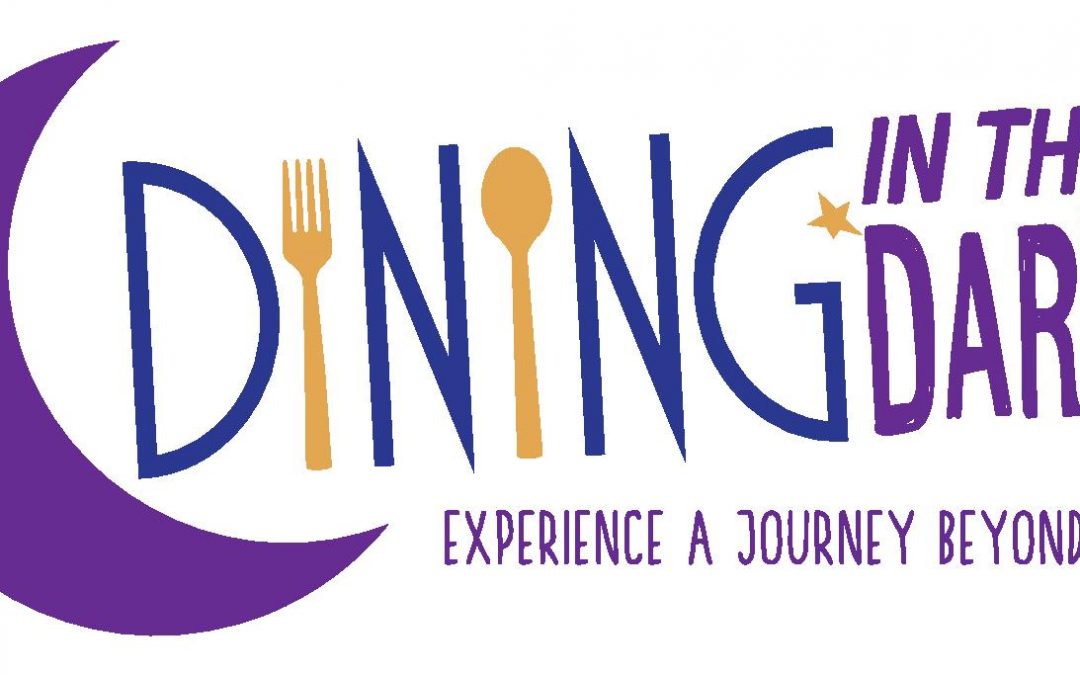
Register Now for Dining in the Dark!
Have you ever wondered what it is like to experience the world as a person without sight?
Vision Loss Alliance of New Jersey invites you to VLANJ Goes Virtual: A Dining in the Dark Experience.
Thursday, October 29, 2020
6:45pm EST – Pre-Show
7:00pm EST – Event
Learn about the life of a person with vision loss through a series of stories featuring:
Cooking and Dining
Orientation and Mobility
Assistive Technology
Click Here for your complimentary registration.
Platinum Sponsors
The Bleach Family
The Augusto Family
Claudia Schreiber
Gold Sponsors
Peapack-Gladstone Bank
Williams Jones Wealth Management
Silver Sponsors
Modera Wealth Management
Frank Cafasso, EA LLC
NJ Natural Gas
NJM Insurance Group
Dispenziere & Company, LLP
Martin and Misty Hagan
BridgeHaven Financial Advisors
Summit Lions Club
Norman Dean Home for Services
McIntee, Fusaro Del Corral, LLC
Eyes Like Mine
Church of the Savior
Sponsor a Student
Dyer Landscaping
Please contact Jennifer Singer, Director of Development at (973) 627-0055 ext 1323, jsinger@vlanj.org, for more information.

VLANJ Goes Virtual October 29, 2020
On October 29, 2020, at 6:45 pm, Vision Loss Alliance of New Jersey will host VLANJ Goes Virtual: A Dining in the Dark Experience, our organization’s primary 2020 fundraising event. The event is designed to enable sighted individuals to experience the world through the eyes of a person living without sight. We will take you through a day in the life of a person with vision loss through three stories featuring Cooking and Dining, Orientation and Mobility, and Technology and will feature testimonials and advice from our program participants. VLANJ Goes Virtual: A Dining in the Dark Experience will provide critical funding for our virtual program.
Attendance at this event is complimentary, however donations are welcome and appreciated. To register click here. If you cannot attend the event but would like to support our programs and services click here to donate.
While much of the world has paused due to the pandemic, our virtual programs continue to help transform the lives of those who are blind or low vision. VLANJ Goes Virtual: A Dining in the Dark Experience will provide critical funding for these virtual programs, and with the support of donors, we will continue to thrive and grow.
Once again, thank you for supporting Vision Loss Alliance of New Jersey.
Kris Marino
Executive Director
Vision Problems During COVID-19 Pandemic
People have unfortunately developed serious vision problems due to the drop in eye care during the COVID-19 pandemic. Learn more by clicking the link below.
Eye of the Storm: Vision Problems Part of COVID-19’s Collateral Damage
The coronavirus tidal wave has made Dr. Ruth Williams rethink what she considers essential and elective care in her field of ophthalmology – which cases constitute an emergency, and which count as routine.
Continued Virtual Classes Thanks To Grotta Grant
The Grotta Fund for Senior Care awarded VLANJ nearly $10,000 in COVID-19 relief funding! This grant allows us to provide Beyond Sight wellness classes, peer support groups, and technology-focused offerings over Zoom video conferencing through the end of 2020, at no charge to participants. Read more by clicking the link below.
Grotta Fund Awards $10K to Keep VLANJ Programs Virtual During Pandemic
DENVILLE, NJ — Soon after the COVID-19 pandemic began, Vision Loss Alliance of New Jersey pivoted from in-person to virtual programs to keep participants – many of them at high risk for the virus – safely connected.
A New Technique To Reverse Vision Loss
What happens when you inject healthy cells into damaged eyes? Click the article link below to learn more about a recent study on this topic.
New cell injection technique could help reverse forms of vision loss
University of Toronto Engineering researchers have developed a new method of injecting healthy cells into damaged eyes. The technique could point the way toward new treatments with the potential to reverse forms of vision loss that are currently incurable. Around the world, millions of people live with vision loss due to conditions such as age-related macular degeneration (AMD) or retinitis pigmentosa.
Eating For Healthy Eyes
Americans may not be eating enough of the foods and nutrients that they need to protect their eye health. Click the article link below the image to learn what nutrients you may need to be eating more of!
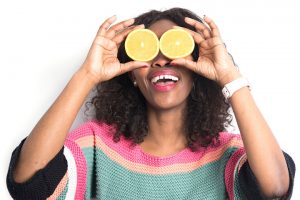
A smiling, laughing woman in a multi-colored shirt holds lemon wedges in front of her eyes in a silly way.
Eating for Eye Health – Food & Nutrition Magazine
According to the World Health Organization, global average life expectancy continues to rise and is increasing faster than it has at any other time during the last 50 years. Approximately 9 percent of the world’s population is 65 or older; this number is expected to grow to 17 percent by 2050.
Red Light and The Retina
Learn what a simple red light could do for eyesight!
Can red light recharge the retina?
With the retina aging quicker than other organs in the body, due to the high concentration and decline of mitochondria in photoreceptors (light-sensitive rods and color-sensitive cones), researchers in a new study took a fresh look at improving mitochondrial function. The study was published June 29 in the Journals of Gerontology: Series A.
Exercise And Vision Loss
How can exercising help to slow or prevent vision loss? ScienceDaily.com shares some insights on how exercise can slow or prevent several common causes.
Exercise can slow or prevent vision loss, study finds
Exercise can slow or prevent the development of macular degeneration and may benefit other common causes of vision loss, such as glaucoma and diabetic retinopathy, new research suggests. The new study from the University of Virginia School of Medicine found that exercise reduced the harmful overgrowth of blood vessels in the eyes of lab mice by up to 45%.

